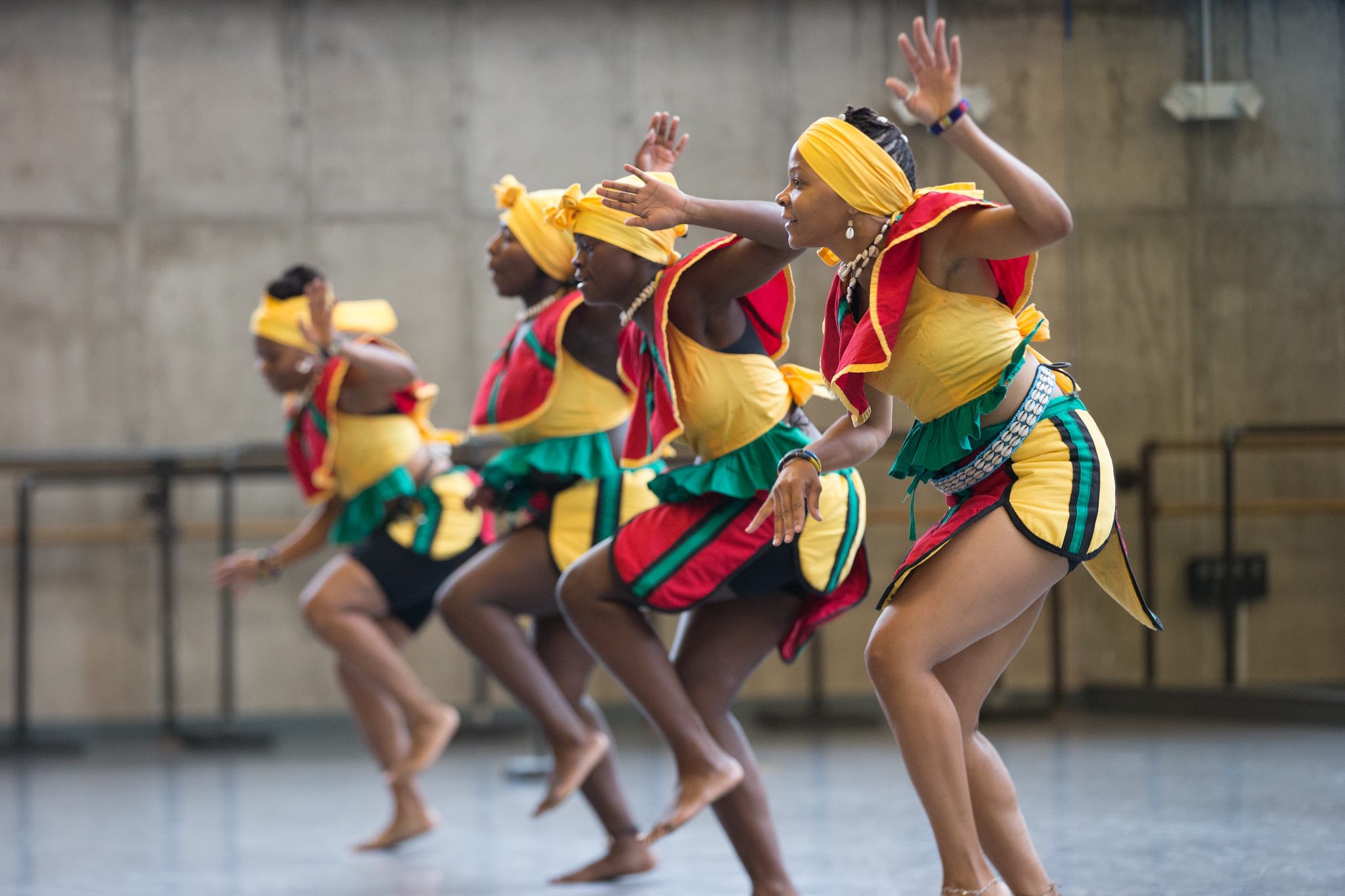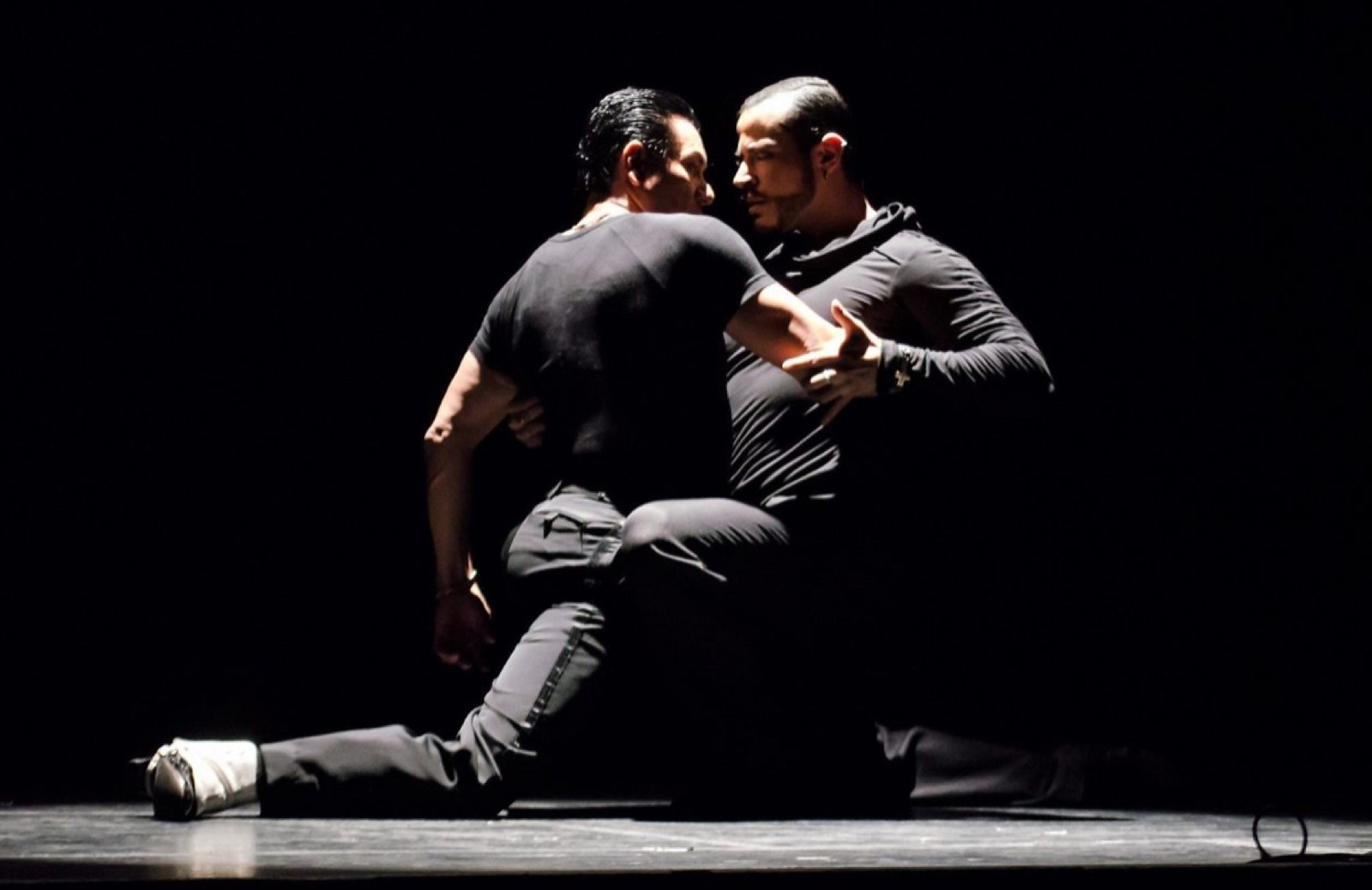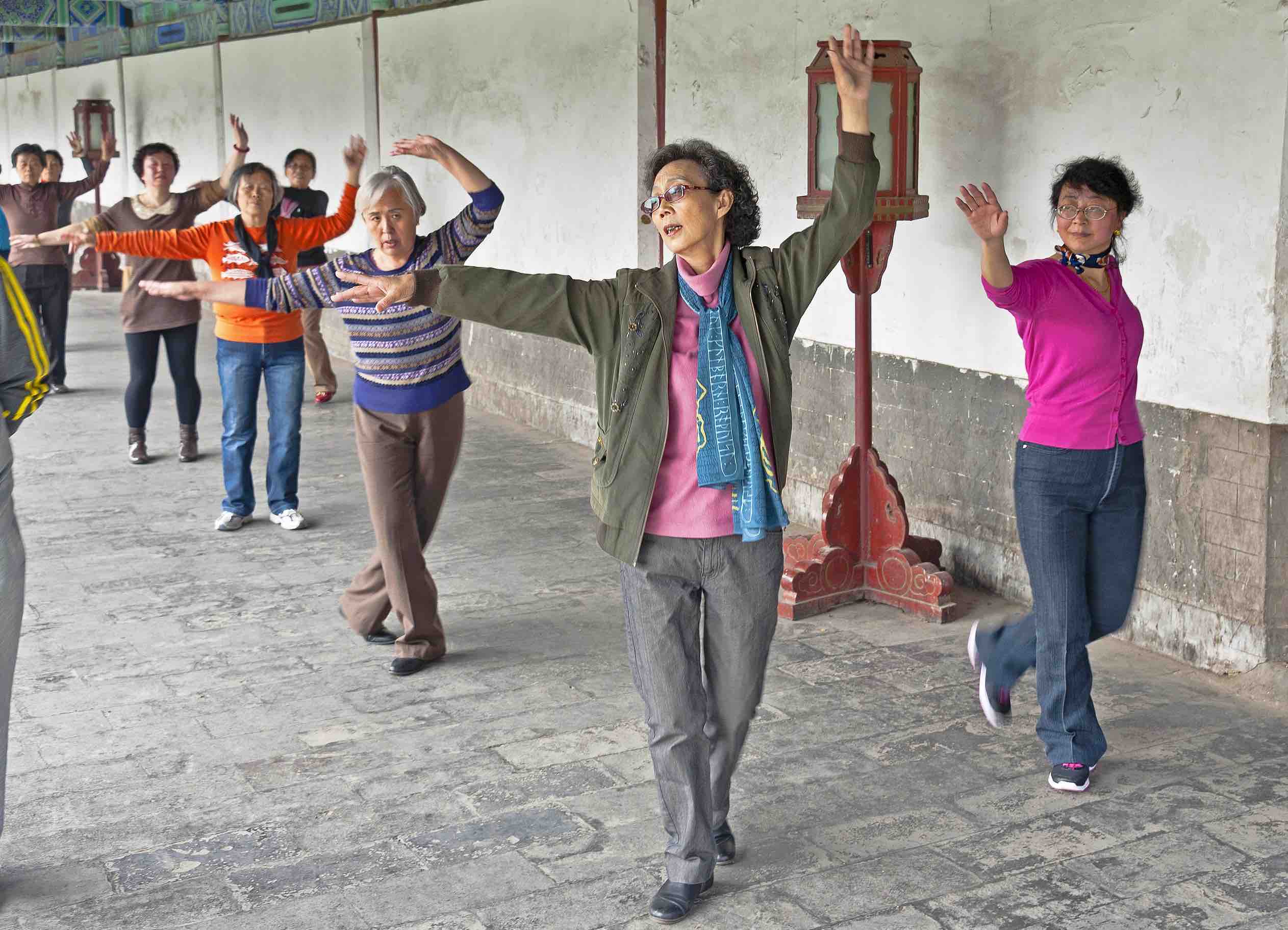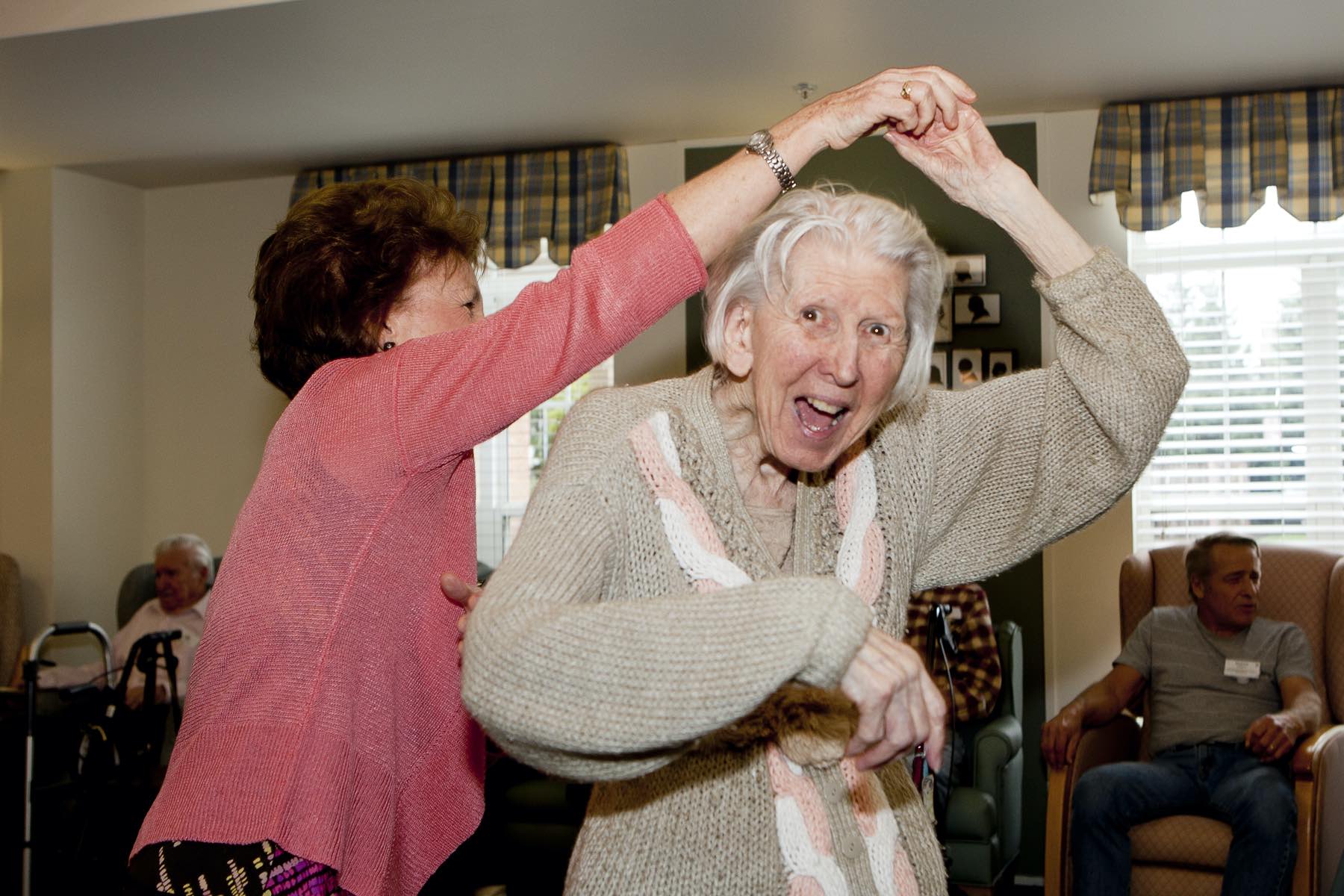Are you a dancer? While some of us might answer an adamant “No!” to that question, we were all dancers at some point. In fact, as a three-week-old baby, you were already starting to sync up your movements to the beat of any music you heard. And even if you now identify as a klutz with two left feet, I’ll bet you have trouble staying completely still when you hear your favorite tune.
Dancing is in our bones, and it’s more than just a fun form of entertainment, explain Julia F. Christensen and her colleagues in a 2017 paper. Cave art seems to suggest that humans were dancing as far back as 70,000 years ago, and it serves important functions for us.
Dance transports us into a state of flow where we forget about our troubles, which is good for regulating our biological systems and nourishing our long-term health. At a deeper level, it’s a way of getting in touch with our bodies and our feelings, allowing us to “try on” different emotions and see how they feel.
It turns out dance is a combination of several activities that are each good for us in their own right: exercising, listening to music, and connecting with other people. Remix those into one groovy package, and you’ve got a behavior that has potent benefits for our mental and physical health.
“Dance is an antidote to stress, a way to combat negative emotions, an elixir for the body, mind, and brain,” write Christensen and Dong-Seon Chang—an Argentine tango dancer and swing dancer—in their 2021 book Dancing Is the Best Medicine.
Hopefully, the many benefits of dance will motivate you to get up and move your body, whether it’s in a packed salsa club, at the next wedding you attend, or alone in your living room. Here are four reasons why dancing is good for you, according to science.
1. Dance makes us feel good
 African dancers at the Kansas City Ballet’s KC Dance Day in 2012 (KCBalletMedia / CC BY 2.0).
African dancers at the Kansas City Ballet’s KC Dance Day in 2012 (KCBalletMedia / CC BY 2.0).
More than a decade ago, two local government organizations in Lincolnshire, U.K., partnered to create a program called Dance4Life to promote community health and well-being. Ultimately, they set up over 30 dance classes that attracted nearly 2,000 people.
As part of the program, researchers surveyed 330 people after they had taken about 8-10 weeks of dance classes. The majority of participants agreed that the program helped them improve their well-being and energy and make new friends. Many of them appreciated that dance could help them express themselves creatively and stay fit and healthy.
But the benefits of dance seem to go beyond the boost we get from exercising. For example, in a 2004 study, students spent 90 minutes doing African dance, practicing hatha yoga, or listening to a biology lecture. Based on surveys before and after, both yoga and dance helped reduce their stress and negative emotions. But dance also increased students’ positive emotions, while yoga didn’t have any effect (and learning about biology actually deflated people’s good feelings).
A study of 133 college students back in the ’80s had similar findings. Here, a single session of dance class gave students a bigger well-being boost compared to a sports class (kayaking, fencing, or basketball) or a regular academic class like biology or literature. Dance made students feel particularly creative, intelligent, healthy, excited, and exhilarated. Compared to practicing sports, the dance students also felt more confident, relaxed, motivated, and energetic.
“Dancing automatically provides me with more strength in all areas of life. I feel my independence and autonomy as well as creativity and security and a strong vitality, love, and gratefulness for all being,” said a 25-year-old woman in another study. “I can accept myself better with all my strengths and weaknesses and can be fond of myself without reserve, without much judgment.”
Dance has two things going for it that exercise typically doesn’t: music and (often) a dance partner. But what if people danced alone or in silence?
In a 2009 study, 22 tango dancers ages 30–56 tried dancing in four different ways: together or alone, with or without music. According to the findings, only regular dancing (with partner and music) boosted people’s positive emotions. The researchers collected saliva samples to see what was going on in the dancers’ bodies, and found different effects: Music helped reduce cortisol, a hormone involved in our response to stress, while dancing with a partner increased testosterone.
Although you can certainly dance alone, many types of dance will find you in close contact with a partner or dancing in a group—bringing along a whole host of social benefits, too.
2. Dance brings us closer together
 Tango dancers in Buenos Aires (Ron Frazier / CC BY 2.0).
Tango dancers in Buenos Aires (Ron Frazier / CC BY 2.0).
At dance events, people often mingle and chat before pairing off and heading to the dance floor. And then they experience another key aspect of dance: physical touch, ranging from holding hands to the full-body embrace of blues or tango.
As a 53-year-old dancer in one study said: “The social interaction satisfies my needs for group togetherness, closeness, and body contact. Even though verbal communication fades into the background during dance, we can cultivate friendships within the dancing community, which, to me, are very positive and important.”
Something also happens on a visceral level once we start moving in sync with other people: That physical synchronization can affect how we feel about each other. For example, in a 2016 study, 94 people participated in a “silent disco” where they learned dance routines and danced together wearing headphones with music. While some groups were fully synchronized, grooving with the same moves to the same tunes, other groups learned a different order of moves or danced to different music altogether. Ultimately, people who danced completely in sync felt closer to each other compared to the others.
“Dance may have been an important human behavior evolved to encourage social closeness between strangers,” write Bronwyn Tarr and her coauthors.
Dancing can be a way to connect not just with other dancers but with your culture and community. For example, dance is central to the cultural identity of indigenous tribes—and was banned at certain times in history alongside other indigenous cultural practices. Professor Sean Asiqłuq Topkok founded an Inupiaq dance group in Fairbanks, Alaska, to share his tribe’s traditions with young people, including values like humility, cooperation, and respect for nature.
“Traditional stories, including those conveyed through drumming and dance, can provide a meaningful educational approach for transmitting cultural knowledge, wellness, and identity to youth and future generations,” he writes with coauthor Carie Green in a 2016 book chapter.
Another book chapter from 2019 describes how West African dance to the djembe drum can help African Americans restore a connection to their culture and identity. Dance was also suppressed on slave plantations in the U.S., and reclaiming it alongside a community of other African dancers can help people experience healing amid the current realities of discrimination and racism, argue Ojeya Cruz Banks and Jeanette “Adama Jewel” Jackson.
“Regaining cultural fluency in West African dance can be a critical part of cultural, emotional, and spiritual restoration,” they write.
3. Dance helps with depression
 Square dancers at the Temple of Heaven Park in Beijing in 2014 (Daniel Case / CC BY-SA 3.0).
Square dancers at the Temple of Heaven Park in Beijing in 2014 (Daniel Case / CC BY-SA 3.0).
Inspired by the mental health benefits of dance, a specific form of therapy called dance movement therapy emerged in the mid-1900s. It comes in many forms, but clients often use movement to observe patterns in themselves, act out challenges, and express emotion. Research suggests that dance movement therapy can help with depression, trauma, nervous breakdowns, chronic pain, and more.
Even if you don’t do formal dance movement therapy, dancing seems to be good for depression and anxiety all by itself. In a 2012 study, nearly 100 people with depression were split into three groups who learned tango, practiced meditation, or were on a waitlist for six weeks. The classes met for 90 minutes a week. Based on surveys, both tango and meditation helped decrease people’s depression compared to the waitlist group, while tango reduced their stress, as well. Afterward, when researchers offered participants a voucher for tango or mindfulness classes, 97% of the participants chose the free dance lessons.
Women are at risk of depression around menopause, so researchers in China invited women ages 44–55 to participate in square dancing classes. (Square dancing in China is often done in public spaces for exercise, and is different from the American cowboy tradition.) Surveys found that square dancing five times a week for three months helped decrease depression at a vulnerable time of life for these women.
Again, dance seems to help with depression above and beyond just exercising or listening to music. In a 2007 study, 31 psychiatric patients with depression were split into three groups who danced to music, just listened to music, or rode on an exercise bike for three minutes. The first group danced to “Hava Nagila,” a joyful, upbeat song that involves holding hands and jumping. (The researchers actually chose this dance because there’s evidence that people who are depressed tend to move less vertically.)
Based on surveys, the dancers increased in motivation, coping, strength, energy, and enjoyment, and felt less anxious, tense, tired, and lifeless after just a few minutes of dancing. They also decreased in depression compared to the music listeners and exercisers.
Many people come to dance when they are experiencing hardships in life. On a night when you feel lonely but can’t bring yourself to call a friend, taking a stranger’s hand and losing yourself in the music can be appealing. People interviewed for one study saw dance classes as a lifeline, a secure, stable routine that they could cling to when the rest of life was chaotic and hard.
4. Dance helps us stay young
 Dancing is one of the activities offered to older adults at Adult Day Health Care in Fairfax County, Virginia (Fairfax County / CC BY-NC-ND 2.0).
Dancing is one of the activities offered to older adults at Adult Day Health Care in Fairfax County, Virginia (Fairfax County / CC BY-NC-ND 2.0).
Joyful seniors dancing in their nursing home isn’t just a feel-good trope for TV; in fact,
a good deal of studies involve teaching dance to older people. In many ways, dancing is the perfect antidote to the challenges of old age, such as declining health, balance, and social connections. And learning dance seems to be good for keeping the brain sharp.
In a 2007 study, 60 elderly Brazilians took ballroom dance classes for a year. The classes covered a wide range of swing, waltz, salsa, tango, and other styles of music. Based on open-ended questionnaires, people reported that dance improved their balance, flexibility, and coordination, and made them feel playful and relaxed. Not only did dance remind them of their youth, but it also helped them reconnect with Brazilian culture.
Researchers Maristela Moura Silva Lima and Alba Pedreira Vieira observed that the elderly dancers gained a sense of confidence, self-esteem, and elegance over the course of the year. Through dance, “the body may change from being a source of oppression to a source of freedom,” they write.
One condition in particular that researchers believe dance can help with is Parkinson’s disease. Parkinson’s is a neurodegenerative disorder that involves difficulties with movement, such as rigidity and balance problems, and many patients struggle with depression. In a 2014 study, 37 people ages 50–80 (most of whom had Parkinson’s or were caregivers for Parkinson’s patients) learned dances like the Charleston and the Saturday night fever dance. After 10 weeks of classes, participants were feeling less angry and experiencing more stable moods.
Another small study in 2012 invited a group of people with dementia and their caregivers to participate in 45-minute circle dance classes weekly for 10 weeks. In circle dances, which exist in cultures across the world, people dance individually but hold each other’s hands or shoulders. The classes in this study began with a warmup and then covered four or five different dances.
According to surveys of the patients and caregivers, dancing improved their quality of life in terms of health, energy, memory, and relationships. The researchers also observed positive changes in the group. Dancing seemed to help with people’s mood and concentration, and encouraged moments of warmth and empathy among the dancers.
For the caregivers, “the group helped them to acknowledge the reality of dementia diagnosis and process their feelings of grief and loss as well as see beyond the diagnosis to the person they cared for,” explain Michelle Hamill and her coauthors. “Music, dance, and movement facilitate a (non-verbal) dialogue through which people with dementia and those around them can communicate and connect more effectively.”
Unfortunately, many of us feel awkward when we dance; I know I do, even after 16 years of swing dancing. But self-consciousness doesn’t have to stop us. In fact, in one study, several people who found out they were supposed to dance opted out of the experiment altogether—and ended up missing out on the emotional benefits, which existed even for participants who felt awkward.
Thankfully, there are endless dance styles to try that can fit your personality, culture, and bodily limitations. Whether you’re the first one onto the dance floor or fighting your fears just to stand up, remember: Dancing is your human birthright.







Comments